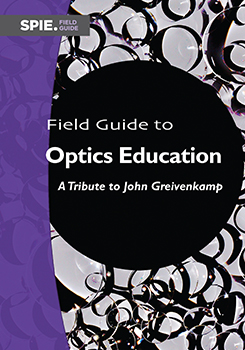Phase Measurement: Simplicity, Beauty, and Uncertainty
Qian Kemao and Yuchi Chen
Nanyang Technological University, Singapore
In 1997, Kemao started his PhD study on phase measurement for precision engineering. He initially knew of Dr. John Greivenkamp’s work through his 1984 paper.1 (Kemao finally met John at the SPIE Optics + Photonics Conference in San Diego in 2014.) This paper used least-squares fitting (LSF) for phase estimation from phase-shifted fringe patterns with random and known phase shifts. The simplicity and beauty of this three-page article make it a classic work. The idea to use LSF influenced Kemao’s work implicitly and explicitly. Some of his related works are depicted in the flowchart and described in the text as three generalizations and three combinations.
Some related works on phase measurement.
Generalization 1: Kemao proposed using the windowed Fourier transform (WFT) for fringe pattern analysis such as phase extraction and denoising. It was later found that the WFT is a maximum-likelihood estimator, and it turned out to be a LSF in a very general sense.2
Generalization 2 vs Combination 1: In John’s work, the phase shifts need to be known. Wang and Han proposed the advanced iterative algorithm (AIA), which essentially used LSF alternatively for phase estimation and phase shift estimation until converged, and thus was applicable for unknown phase shifts.3 Later, Kemao et al. combined WFT with John’s LSF to achieve the same goal, where the WFT and the LSF were responsible for phase-shift estimation and phase extraction, respectively.4 In general, the phase is static since phase shifting is involved.
Combination 2: The WFT and the LSF were combined again, in a slightly different way, to extract a dynamic phase from a sequence of fringe patterns in a frame-wise manner, where the WFT and the LSF were responsible for phase denoising and phase extraction, respectively. A unique feature of this method is that neither phase shifting nor a carrier was needed during this process.5
Generalization 3 and Combination 3: The AIA’s convergence and accuracy are uncertain when various error sources are present. Yuchi Chen (the second author), in his 4 years of PhD study starting from 2018, worked on this problem. The convergence was confirmed through thousands of simulations; the error sources were handled by the proposed general iterative algorithm (GIA),6 and more interestingly, the phase-shifting algorithms for known and unknown phase shifts were integrated as a hybrid solution.7 We had the goal of making the GIA a simple and beautiful framework, and indeed we accomplished this. However, we still need to see how it works in other applications, which is a new uncertainty for us to address.
The pursuit of simplicity and beauty and the emergence of uncertainty has been consistently encouraging researchers to move forward. John was one of these researchers.
References1. J. Greivenkamp, “Generalized data reduction for heterodyne interferometry,” Optical Engineering 23(4), 234350 (1984) [doi: 10.1117/12.7973298].
2. Q. Kemao, Windowed Fringe Pattern Analysis, SPIE Press (2013) [doi: 10.1117/3.1002080].
3. Z. Wang and B. Han, “Advanced iterative algorithm for phase extraction of randomly phase-shifted interferograms,” Optics Letters 29(14), 1671–1673 (2004).
4. Q. Kemao, H. Wang, W. Gao, L. Feng, and S. H. Soon, “Phase extraction from arbitrary phase-shifted fringe patterns with noise suppression,” Optics and Lasers in Engineering 48(6), 684–689 (2010).
5. L. Kai and Q. Kemao, “Dynamic phase retrieval in temporal speckle pattern interferometry using least squares method and windowed Fourier filtering,” Optics Express 19(19), 18058–18066 (2011).
6. Y. Chen and Q. Kemao, “General iterative algorithm for phase-extraction from fringe patterns with random phase-shifts, intensity harmonics and non-uniform phase-shift distribution,” Optics Express 29(19), 30905–30962 (2021).
7. Y. Chen and Q. Kemao, “Phase-shifting algorithms with known and unknown phase shifts: comparison and hybrid,” Optics Express 30(5), 8275–8302 (2022).



